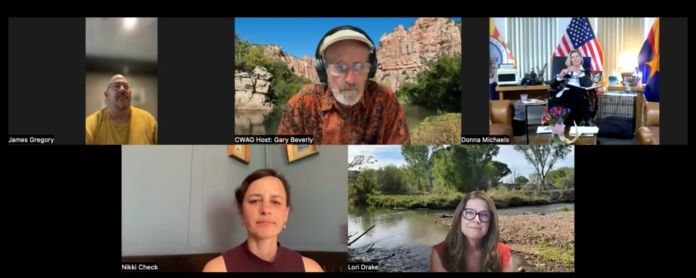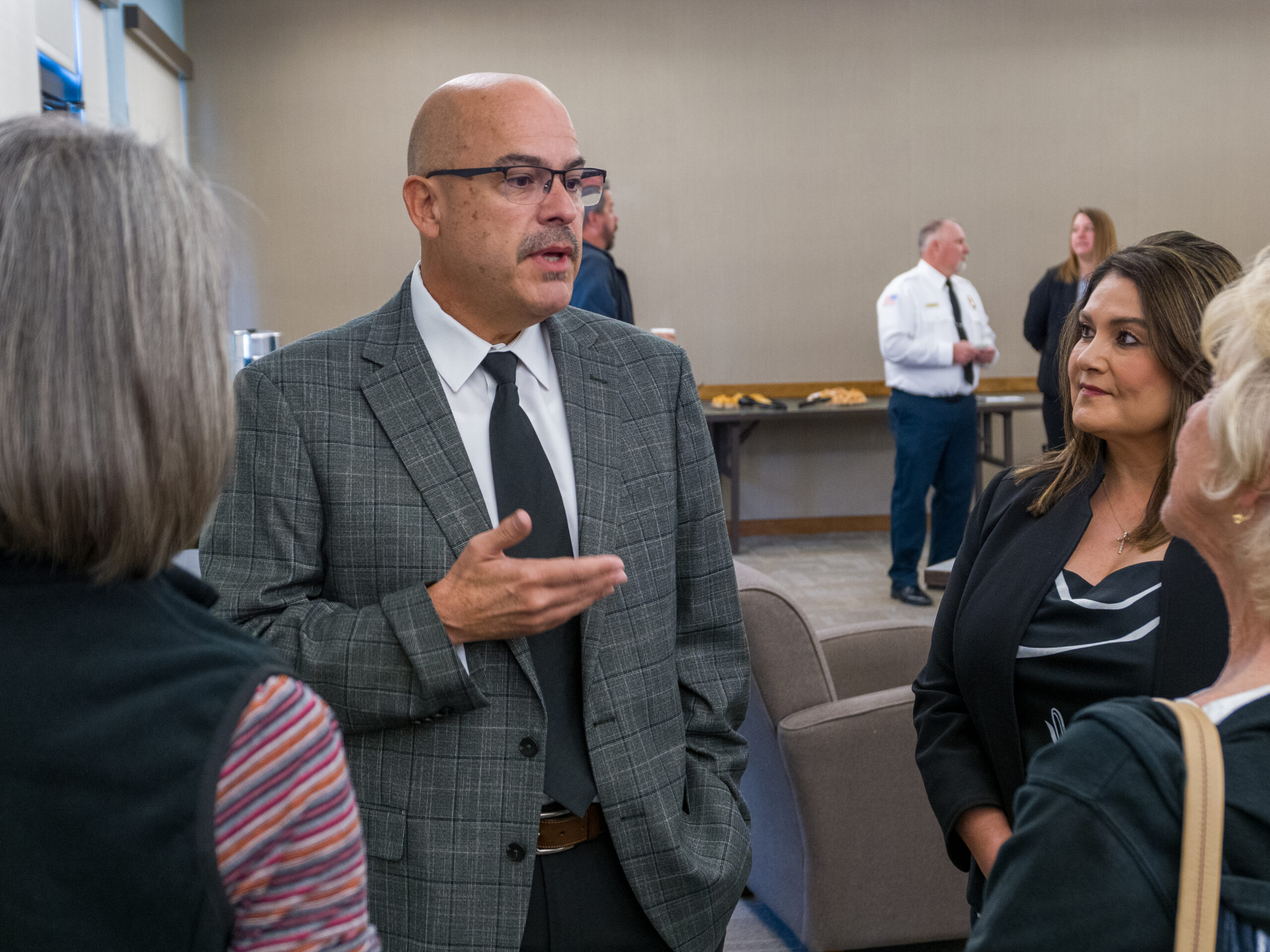The Citizens Water Advocacy Group, a nonprofit advocating water conservation, held an online joint forum for the Yavapai County supervisor District 2 and 3 candidates on Friday, June 28.
Candidates in attendance were District 3 incumbent Donna Michaels and her primary challenger and former Mayor of Jerome Nikki Check, both Democrats; Mingus Union High School District Governing Board President Lori Drake, the unopposed Republican candidate for District 3; and incumbent District 2 Supervisor James Gregory, a Republican. District 2 Republican primary challenger Wiley Cline canceled due to a family emergency.
“The purpose of these forums is to put water issues into the electoral dialogue,” event moderator Gary Beverly subsequently said. “I think we’ve got the strongest group of candidates that I’ve ever seen running. So I’m optimistic that the new board … will do a better job with water resource planning.”
Water Protection
“For the first time ever, we’ve been able to form a coalition with three other counties to develop a rural county coalition to address the disequities that we face in rural Arizona regarding water protection,” Michaels said. “In fact, we started out with [the] board unanimously approving a proclamation or simply a request to our governor to ‘please don’t forget that water security is essential for all of our rural counties.’”
- Michaels also cited her opposition for Senate Bill 1221, which did not make it out of the state House of Representatives, and would have created basin management areas to restrict private water use.
- “Gregory subsequently stated that he supported SB 1221. “I believe local control is important. SB 1221 [aimed] to give rural communities more power of their groundwater by creating Basin Management Areas.”
Beverley said CWAG viewed SB 1221 as a poor bill that was in the interests of big agriculture and had lobbied against it, although “we didn’t have an official position written out.”
Check voiced support for reforming the Yavapai County Water Advisory Committee, which was dissolved in 2014 but had been intended to create a sustainable regional water plan.
“What’s essential is that we start to distill our[water] conflicts into places of consensus,” Check said. “It’s a difficult process. But if we don’t do it, water policy is going to be coming from above. And we really want it to be coming from our rural voices.”
Drake focused on the need to coordinate water efforts with the Arizona Department of Water Resources and said that she would not be in favor of creating an additional department inYavapai County.
Instead, she called for working “together to create a better conservation and efficiencies for our community.”
Regional Goals
Candidates were asked what the goals of regional water planning should be, whether those plans should include ground and surface water regulation and the role of non-governmental organizations in the planning process.
Michaels and Gregory said that they would prefer that state legislation prioritize groundwater conservation, whereas Check stated that there should be three main goals:
ㅁ Ensuring that the Verde River remains perennial.
ㅁ Securing the “water future” for ground and surface water for users.
ㅁ Continuing the role of agriculture in the county.
The Republican candidates called for a unified management plan for the county as a whole because the Verde River flows on both sides of Mingus Mountain, while Michaels preferred separate regional plans in order to consider the population differences and differences in usage between the Verde Valley and Prescott. Check did not state a preference.
Water Management Planner
“The new comprehensive plan recommends a County Water Advisory Committee, a new full-time employee planner focused on water management, a public process, a water conservation program and coordination with flood control,” Beverly said and proceeded to ask the candidates if they support those recommendations.
“I am not necessarily for having a new employee at this time,” Drake said, while both Democrats voiced support for a new employee.
“I think we have now reached the level where planning should have a designated person who has depth of expertise in helping us move through an application process with the best possible
Information before we make a decision,” Michaels said.
Developer Incentives
All of the candidates said that they would support looking into incentives for future developers to use drought-tolerant landscaping in their projects.
“The base flow of the Verde River is sharply declining every year since 1996,” Beverly said. “This is the result of a combination of groundwater pumping and increased temperatures associated with climate change. Declining flows have changed the aquatic habitat such that U.S. Forest Service scientists now suggest that the upper river is no longer prime native fish habitat. This is a significant loss to one of the best remaining native fisheries in Arizona … What can the county do to sustain and restore water flow in the Verde River?”
Drake replied that the county “can encourage conservation and recharge efforts in and around the Verde,” but did not provide examples.
“We absolutely have to get the education ramped up in a way that’s palatable for people to accept that our new way of living in arid environments is to have self-imposed conservation expectations,” Michaels said. “I do see a way forward for mandatory conservation expectations, in some not too distant [future] hopefully water legislation … I think the county should be the lead of that … We should all expect that the county would want to work with NGOs and others to incentivize others to restore flow despite the climate challenges that we are facing.”
Check stated that her priority would be to focus on the Upper Verde River because it was the most vulnerable.
“ I think directly the county should be supportive [and] involved in making a plan to reduce development in the Big Chino Aquifer,” Check said. “Hydrologically, there is more information that’s needed and how to best do that. But working with NGOs, and putting together a conservation plan, and codifying it in a new zoning ordinance is going to be the best teeth that we can put out there to ensure that [the] Upper Verde continues flowing.”
*Editor’s Note: This story has been edited to accurately reflect the candidates positions.



